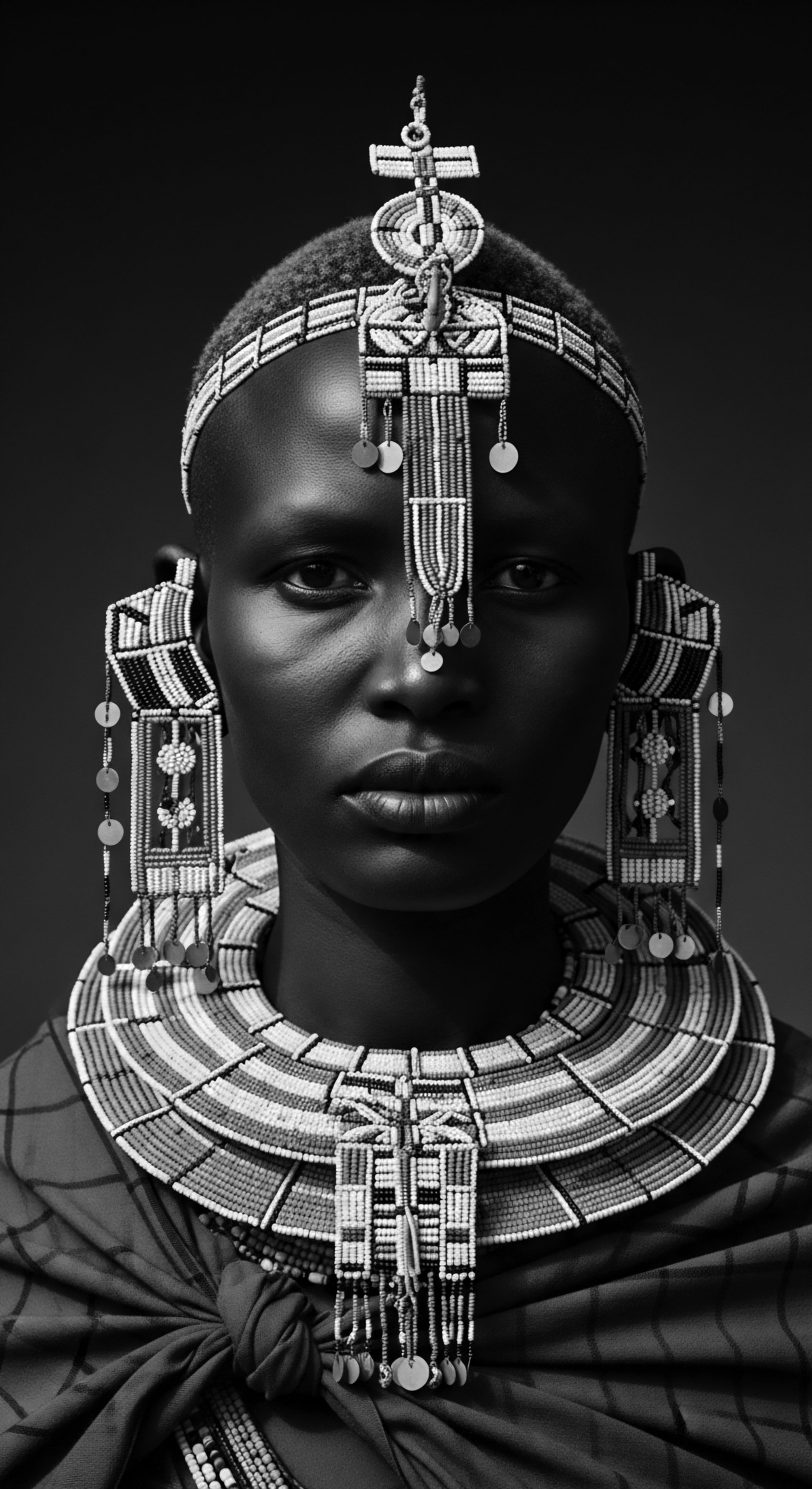
Fundamentals
The hair follicle, a microscopic marvel, serves as the wellspring from which each strand of hair emerges, a living cylinder of cells deeply rooted within the skin. It is far more than a mere anchor; it is a dynamic organ, perpetually engaged in a cycle of growth, rest, and renewal. For those with textured hair, particularly individuals of Black and mixed-race heritage, understanding the Hair Follicle Physiology is not merely an academic pursuit; it is a deeply personal revelation, offering insights into the very nature of one’s inherited crown. The form and function of this tiny structure hold the secrets to the unique characteristics, resilience, and historical journey of diverse hair types.
The hair follicle’s basic purpose involves generating hair fibers, which offer protection from environmental elements and play a role in sensory perception. However, for individuals whose ancestral lines carry the rich legacy of textured hair, the follicle’s activity extends into realms of cultural expression and identity. The intricate design of the follicle dictates the curl pattern, thickness, and strength of the hair it produces, qualities that have been celebrated, sometimes misunderstood, and often central to community practices for generations.
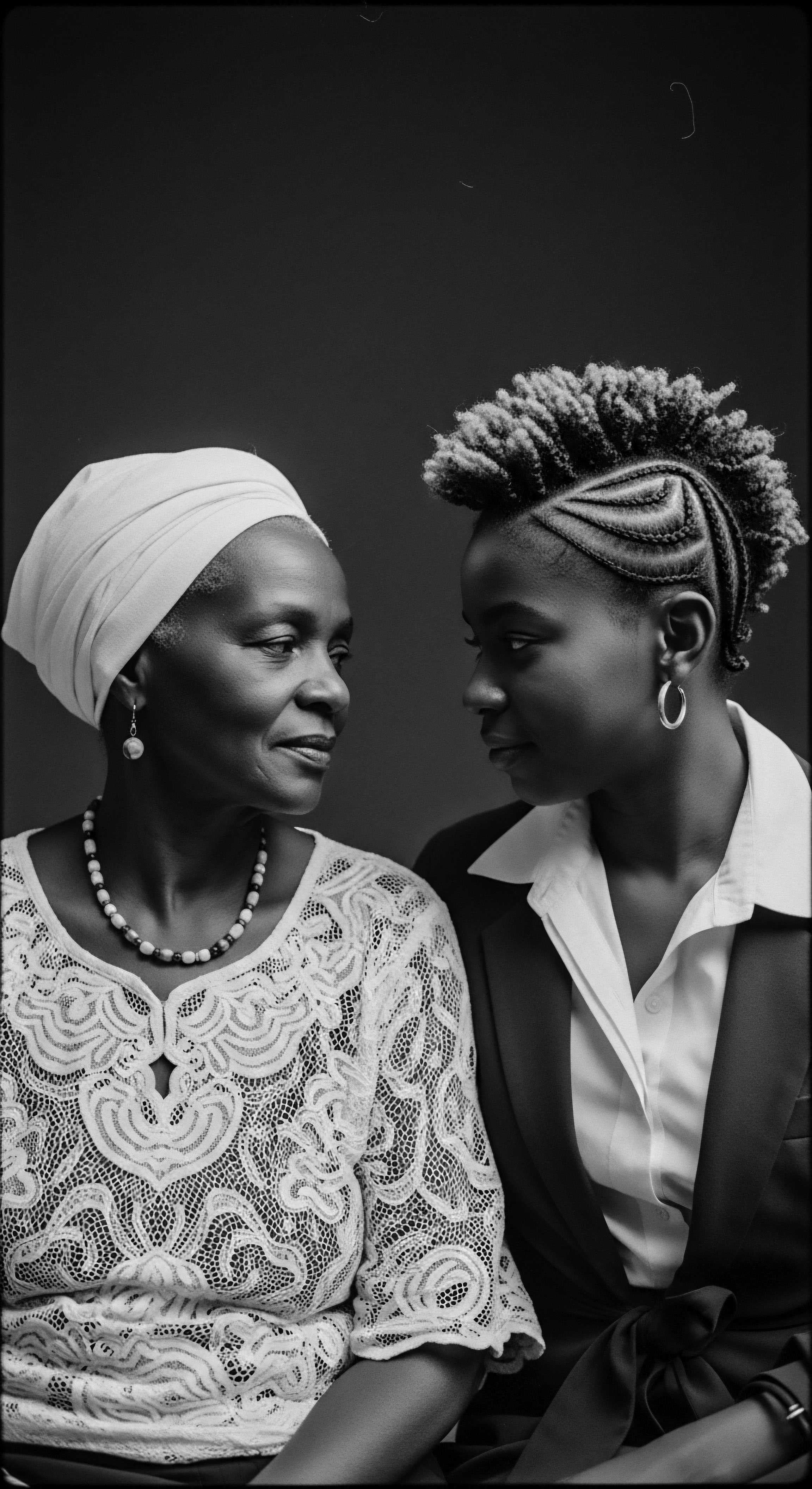
The Seed of Identity
At its most fundamental, the hair follicle begins as a small indentation in the epidermis, reaching down into the dermis. Within this delicate pocket, a specialized cluster of cells, the dermal papilla, resides at the base. This papilla acts as the command center, receiving vital nutrients and signals that orchestrate hair growth. Surrounding the dermal papilla is the hair matrix, a zone of rapidly dividing cells that produce the hair shaft itself.
The shape of this follicle, specifically its curvature, is a primary determinant of the hair’s texture. For textured hair, the follicle typically exhibits a distinctive elliptical or even a curved, S-shaped configuration, contrasting with the more circular follicles found in straight hair types. This inherent curvature shapes the hair strand as it grows, causing it to coil, wave, or kink, a beautiful expression of genetic heritage.
The outer root sheath, an extension of the epidermis, encases the inner root sheath, which molds the growing hair fiber. This inner sheath, composed of three distinct layers—Henle’s layer, Huxley’s layer, and an inner cuticle—plays a crucial part in guiding the hair’s formation. The way these layers interact, along with the angle at which the hair emerges from the scalp, all contribute to the final appearance and feel of a strand. Appreciating these elemental components allows for a deeper comprehension of why textured hair possesses its unique characteristics, often requiring distinct approaches to care that honor its biological design.
The hair follicle is a living testament to ancestral design, dictating the very curl and character of each strand.
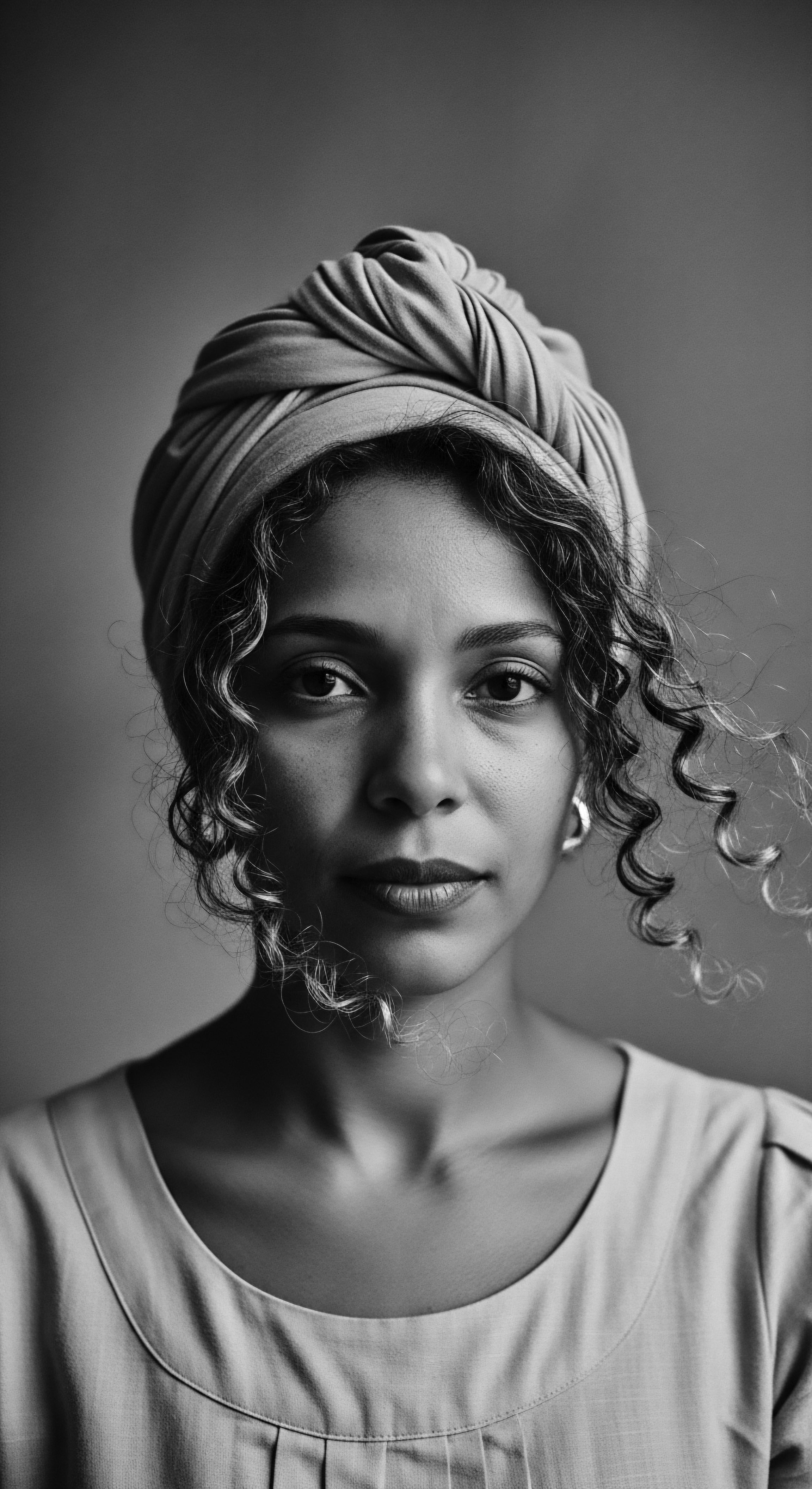
Anatomy’s Ancient Wisdom
Across various cultures, especially within communities with a deep history of textured hair, there existed an intuitive comprehension of hair’s fundamental needs, even without modern scientific nomenclature. Ancient practices of oiling, braiding, and protective styling, passed down through oral traditions and communal rituals, implicitly acknowledged the follicle’s role in hair health. They recognized the need to protect the emerging strand and the scalp environment from external stressors.
For instance, the use of natural plant oils and butters, long before their chemical composition was understood, served to lubricate the hair shaft as it exited the follicle, mitigating friction and reducing breakage inherent to highly coiled structures. This historical wisdom, rooted in observation and generations of care, speaks to an early, embodied understanding of hair follicle well-being.
- Dermal Papilla ❉ The foundational cellular cluster within the follicle that orchestrates hair growth by supplying essential nutrients and signals.
- Hair Matrix ❉ A zone of active cell division surrounding the dermal papilla, responsible for creating the hair fiber itself.
- Inner Root Sheath ❉ A temporary structure within the follicle that molds the growing hair shaft, contributing to its final shape and texture.
- Outer Root Sheath ❉ An epidermal extension that envelops the hair follicle, providing a protective and supportive environment for the growing hair.
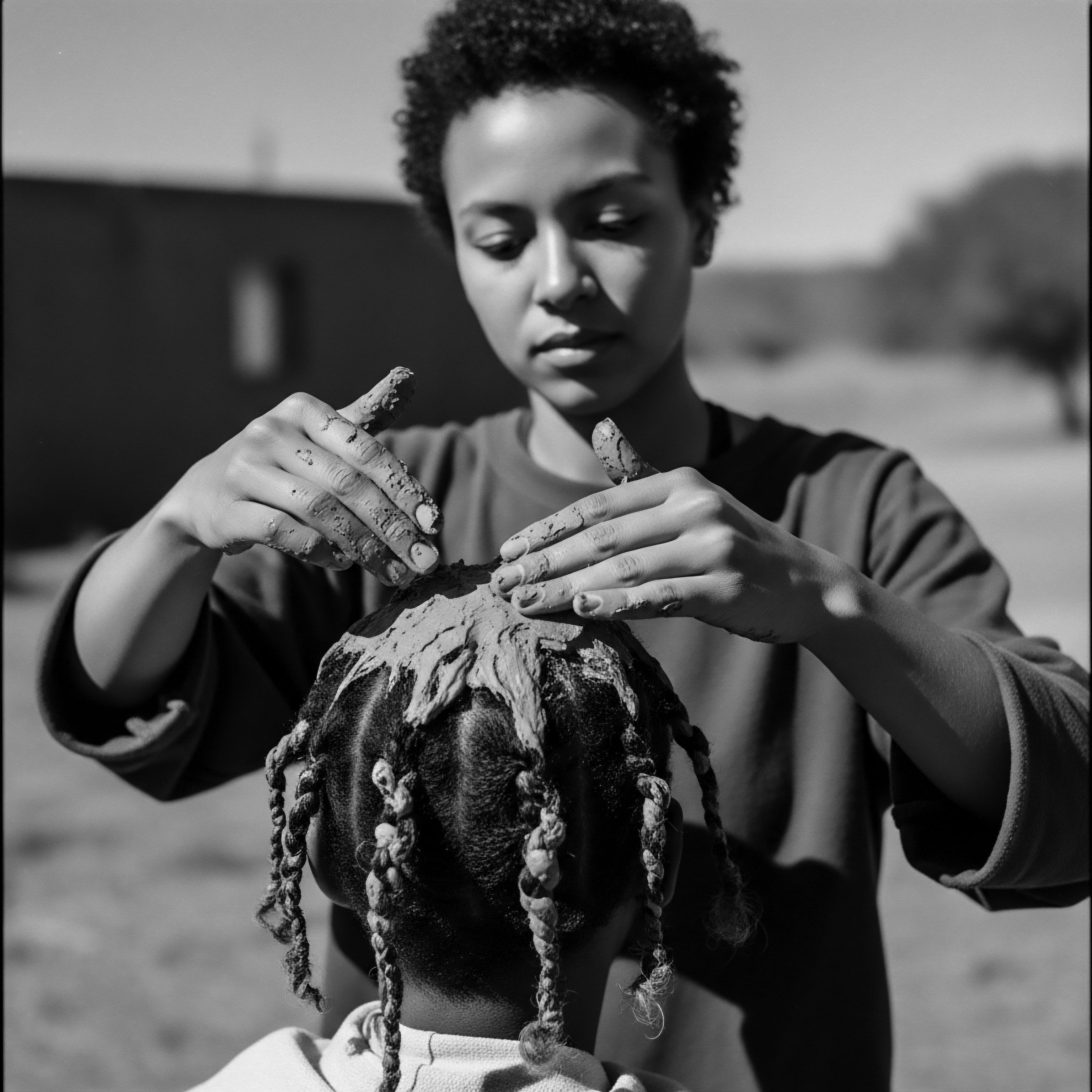
Intermediate
Moving beyond the foundational elements, an intermediate comprehension of Hair Follicle Physiology for textured hair involves recognizing the intricate interplay of genetics, cellular processes, and environmental factors that sculpt each strand. The curl pattern, a defining characteristic of textured hair, is not merely a surface phenomenon; it is intrinsically linked to the follicle’s distinctive helical or S-shaped form and the asymmetrical distribution of cells within the hair bulb. This internal architecture means that as hair cells multiply and keratinize, they do so unevenly, causing the hair shaft to bend and coil as it grows. This inherent curvature contributes to the unique beauty of textured hair, yet it also presents particular challenges for moisture distribution and susceptibility to mechanical stress.
The physiology of textured hair follicles often means a slower distribution of natural sebum along the hair shaft due to the numerous twists and turns of the curl pattern. This characteristic can lead to a perception of dryness, even when the scalp produces adequate oils. Ancestral practices, often dismissed as mere beauty rituals, frequently incorporated methods that addressed this very physiological reality, emphasizing moisture retention and gentle manipulation to preserve the integrity of the hair as it emerged from its follicular cradle.
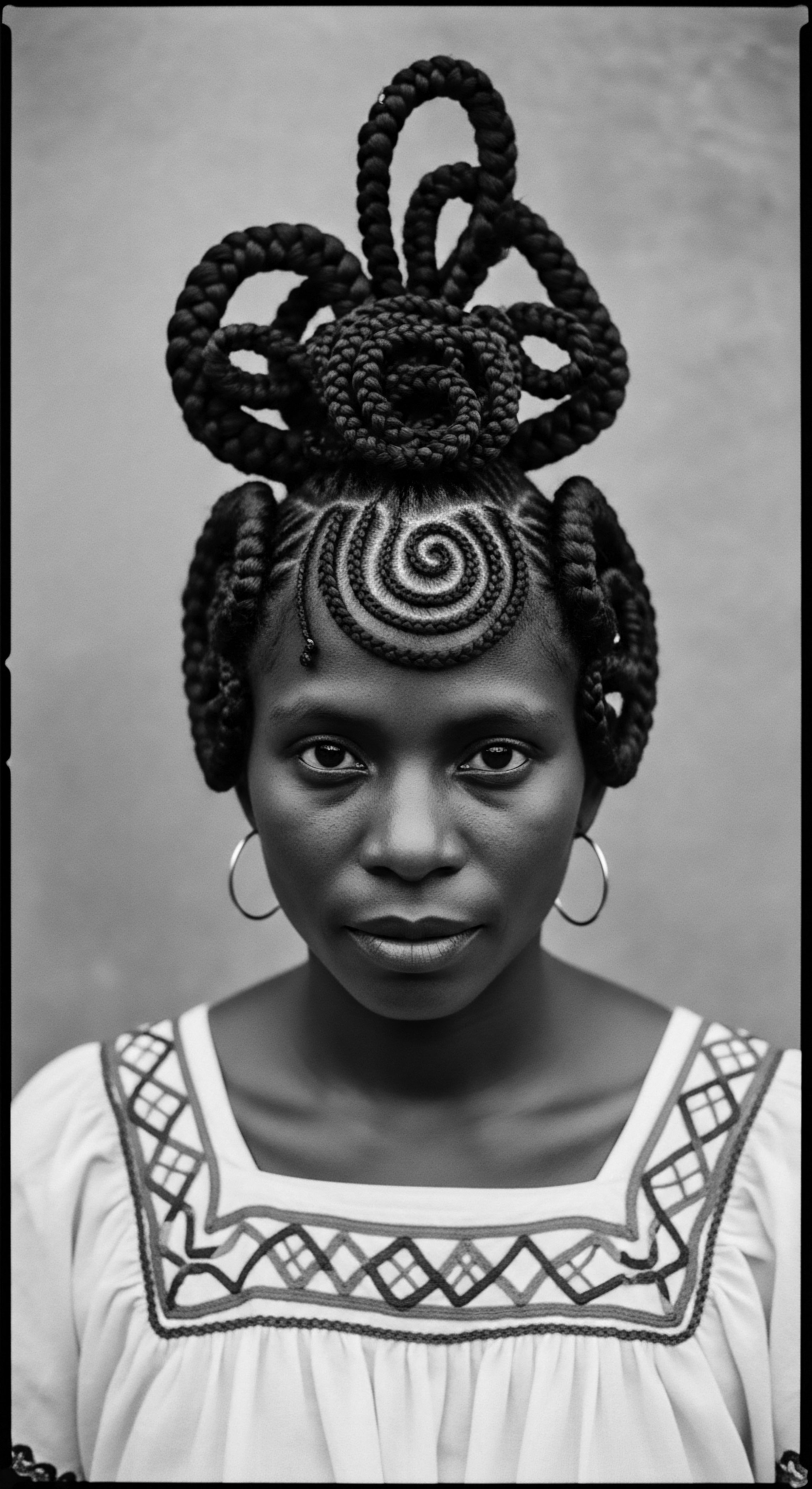
The Helix’s Unfolding Story
The hair growth cycle, a continuous dance of regeneration, comprises three primary phases ❉ anagen (growth), catagen (transition), and telogen (rest). While these phases are universal, their duration and characteristics can vary among individuals and hair types. Textured hair, for instance, often exhibits a shorter anagen phase compared to straight hair, which can influence maximum hair length. This physiological distinction underscores why certain hair care traditions prioritized methods that minimized breakage and supported the hair’s natural growth trajectory, rather than forcing it into unnatural lengths or textures.
The mechanical properties of textured hair are also a direct consequence of its follicular origin. The elliptical cross-section and the presence of twists along the hair shaft make it inherently more prone to breakage at points of curvature. This increased fragility is not a sign of weakness but a structural reality demanding thoughtful care. Understanding this aspect of hair follicle physiology empowers individuals to select practices and products that honor their hair’s natural inclinations, moving away from harsh treatments that historically sought to alter its intrinsic form.
The unique curl of textured hair is a physiological signature, a testament to the follicle’s specialized architecture.
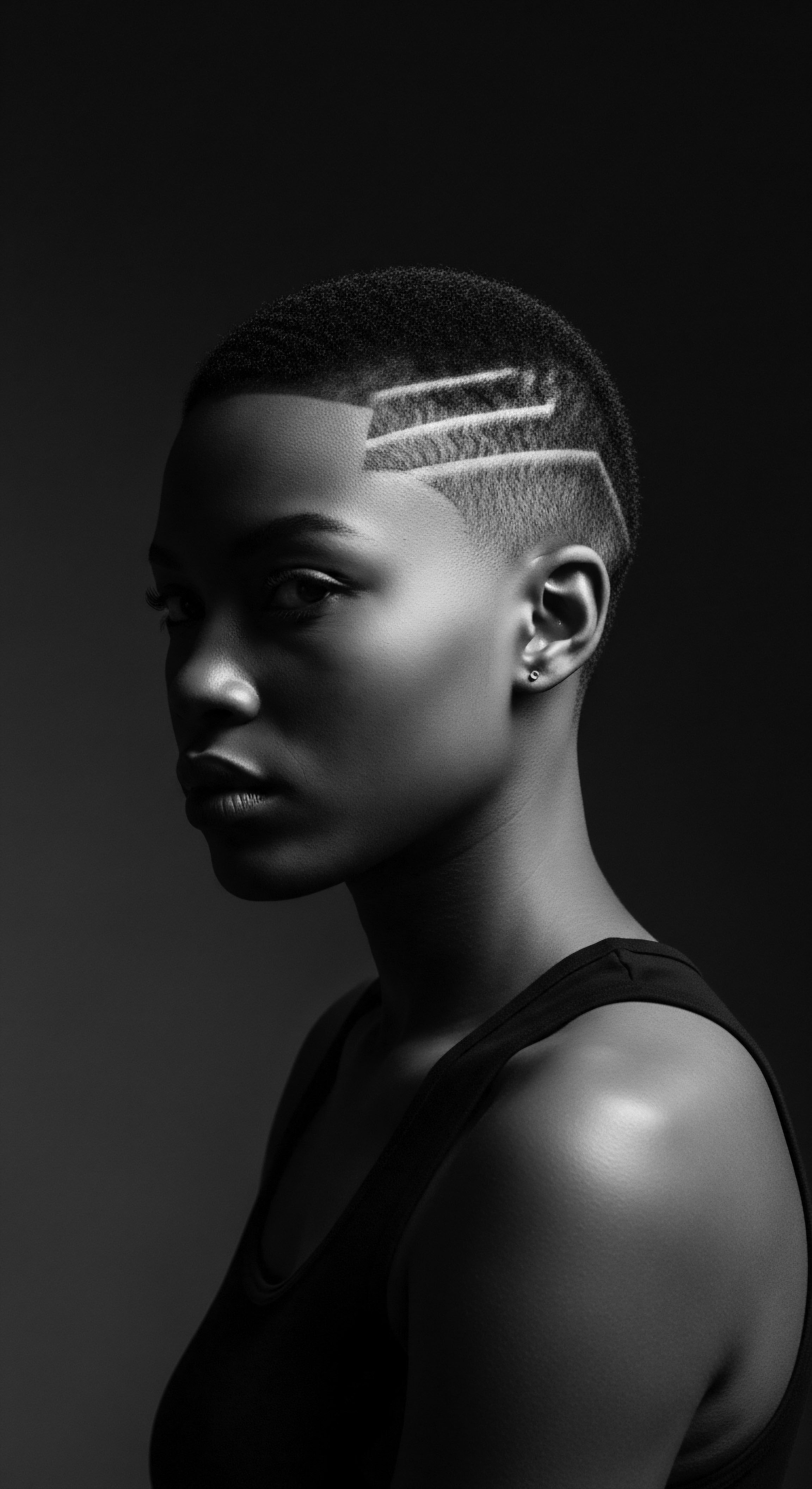
Cycles of Ancestral Growth
Traditional hair care within Black and mixed-race communities often mirrored an intuitive grasp of the hair growth cycle and the specific needs of textured strands. Cleansing rituals, often less frequent and gentler than those for straighter hair, respected the slower sebum distribution and aimed to preserve natural moisture. The application of oils, butters, and conditioning agents, derived from local flora, served to fortify the hair from the outside, creating a protective layer that shielded the delicate cuticle, the outermost layer of the hair shaft, as it emerged from the follicle.
Consider the use of protective styles—braids, twists, and coils—which have been central to hair culture across the African diaspora for centuries. These styles, beyond their aesthetic and social significance, offered a physiological benefit by reducing daily manipulation and tension on the hair follicle, thereby supporting its natural growth cycle and minimizing breakage. This approach recognized the hair’s need for periods of rest and protection, allowing the follicle to function optimally without undue external stress.
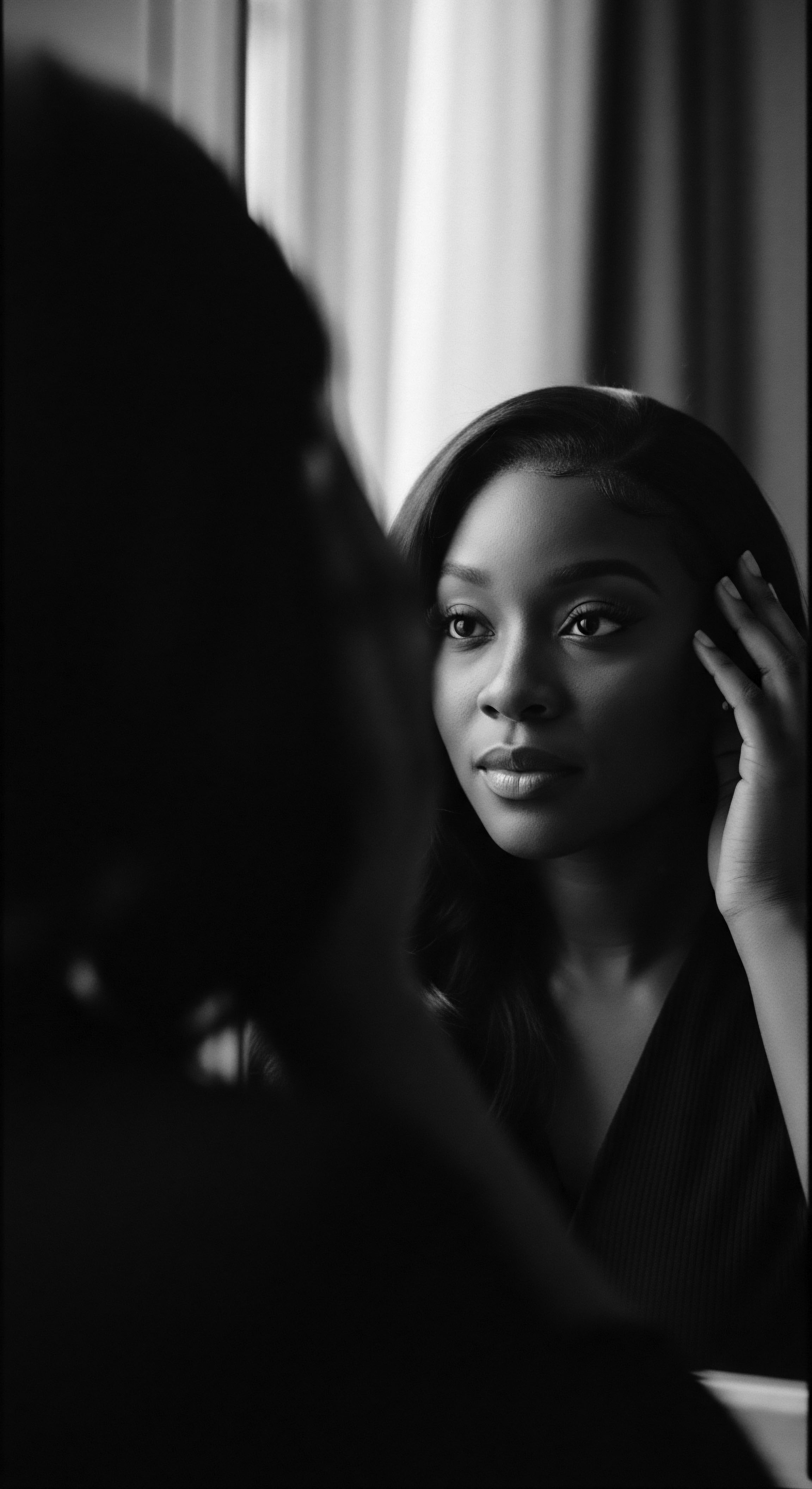
Nourishment from the Earth
The deep cultural heritage of hair care is often intertwined with ethnobotanical wisdom, utilizing plants and natural ingredients for their perceived benefits to hair and scalp health. These traditional remedies, passed through generations, frequently contained compounds that supported the hair follicle environment.
A variety of plants and natural substances have been historically employed across African communities for hair treatment and care, reflecting an intuitive understanding of their beneficial properties. For instance, in Northern Morocco, ethnobotanical surveys have identified numerous medicinal plants traditionally used for hair, including those for stimulating growth or addressing hair loss. These practices often involved preparing decoctions, infusions, or pastes from plant parts, which were then applied to the scalp, implicitly targeting the follicle environment.
| Traditional Ingredient/Practice Shea Butter (Vitellaria paradoxa) |
| Cultural Context/Heritage West and East African traditions, widely used for skin and hair protection. |
| Physiological Relevance to Hair Follicle Provides rich emollients to seal moisture into the hair shaft as it exits the follicle, reducing friction and breakage for coiled strands. Supports scalp barrier function. |
| Traditional Ingredient/Practice Coconut Oil (Cocos nucifera) |
| Cultural Context/Heritage Caribbean and West African diaspora, also South Asian influences. |
| Physiological Relevance to Hair Follicle Penetrates the hair shaft to reduce protein loss, offering internal reinforcement to hair emerging from the follicle, and provides a protective layer against environmental stressors. |
| Traditional Ingredient/Practice Aloe Vera (Aloe barbadensis miller) |
| Cultural Context/Heritage Used across various African cultures for its soothing properties. |
| Physiological Relevance to Hair Follicle Calms scalp irritation, reducing inflammation around the follicle which can otherwise impede healthy hair growth. Provides hydration to the scalp environment. |
| Traditional Ingredient/Practice Black Soap (Alata Samina, Dudu-Osun) |
| Cultural Context/Heritage West African origins, used for gentle cleansing. |
| Physiological Relevance to Hair Follicle Offers a mild cleansing action for the scalp, removing impurities without stripping natural oils, thereby maintaining a balanced environment for follicular activity. |
| Traditional Ingredient/Practice Hibiscus (Hibiscus rosa-sinensis) |
| Cultural Context/Heritage Used in various traditional hair remedies for conditioning and strength. |
| Physiological Relevance to Hair Follicle Rich in amino acids and vitamins, it nourishes the scalp and potentially strengthens the hair root, promoting healthy hair growth from the follicle. |
| Traditional Ingredient/Practice These ancestral remedies reflect a deep, intuitive understanding of nurturing the hair from its very source, supporting the delicate physiology of the follicle. |
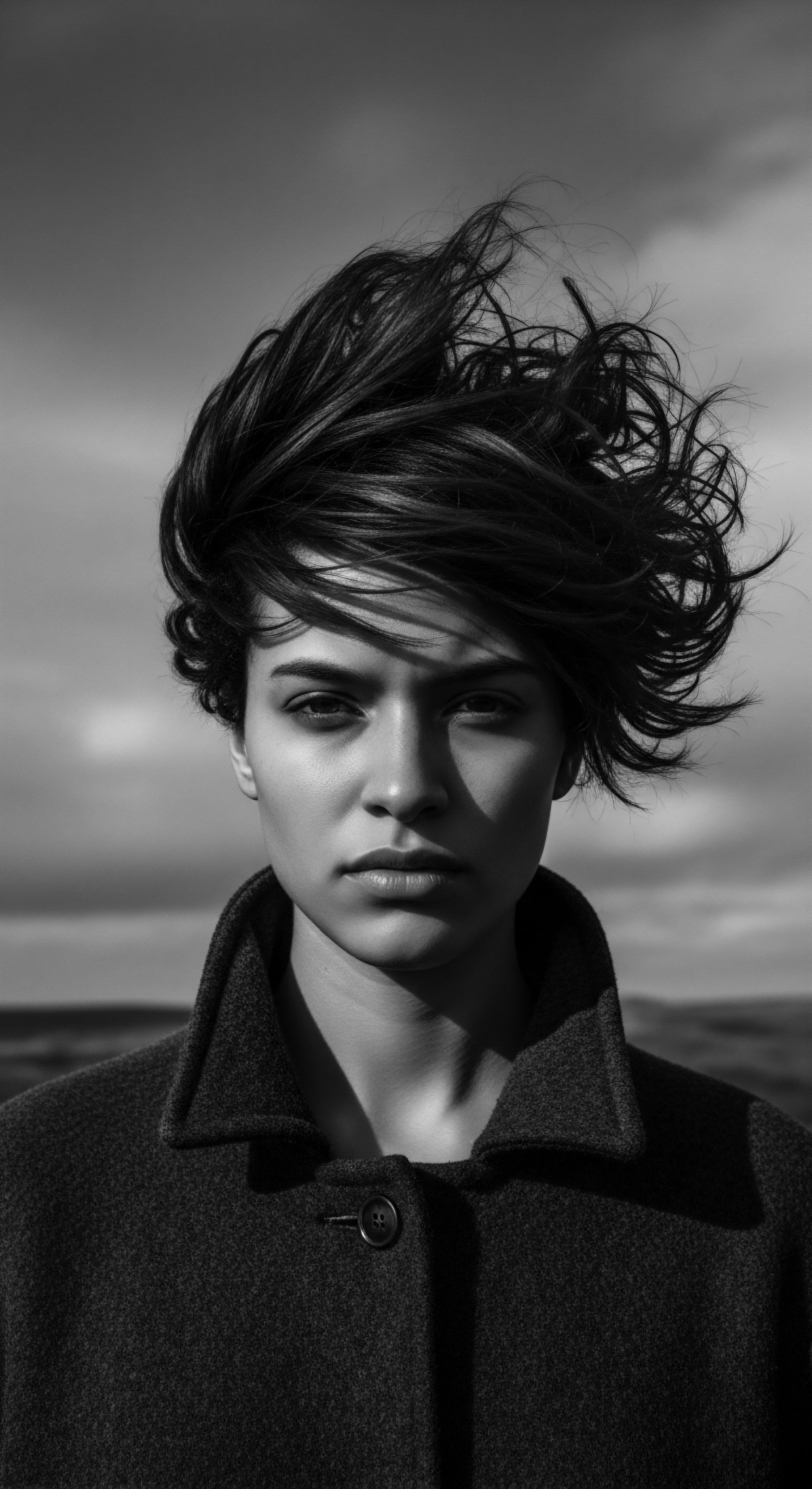
Academic
The Hair Follicle Physiology represents the comprehensive study of the hair follicle as a complex mini-organ, encompassing its anatomical structures, cellular biology, genetic regulation, cyclical growth dynamics, and its intricate interactions with the surrounding dermal and epidermal environments. This academic delineation extends beyond mere morphology to consider the molecular signaling pathways, stem cell niches, and neuro-immune mechanisms that govern hair production and maintenance. For textured hair, this examination is particularly pertinent, as its distinctive characteristics are deeply rooted in specific physiological adaptations and have been profoundly shaped by historical, cultural, and environmental pressures. A precise understanding of its meaning requires acknowledging the biological underpinnings that differentiate textured hair, alongside the socio-historical contexts that have influenced its care and perception.
The meaning of Hair Follicle Physiology, especially in the context of textured hair, is not static; it is a dynamic concept, continuously refined by advancements in scientific inquiry and enriched by a growing appreciation for diverse hair legacies. It encompasses the intricate processes by which the follicle initiates, sustains, and sheds hair, while also recognizing how external forces—from styling practices to societal norms—can exert a significant, sometimes detrimental, influence on its delicate equilibrium. This holistic interpretation seeks to bridge the gap between microscopic cellular events and the lived experiences of individuals, particularly those whose hair has been a site of both cultural celebration and historical struggle.
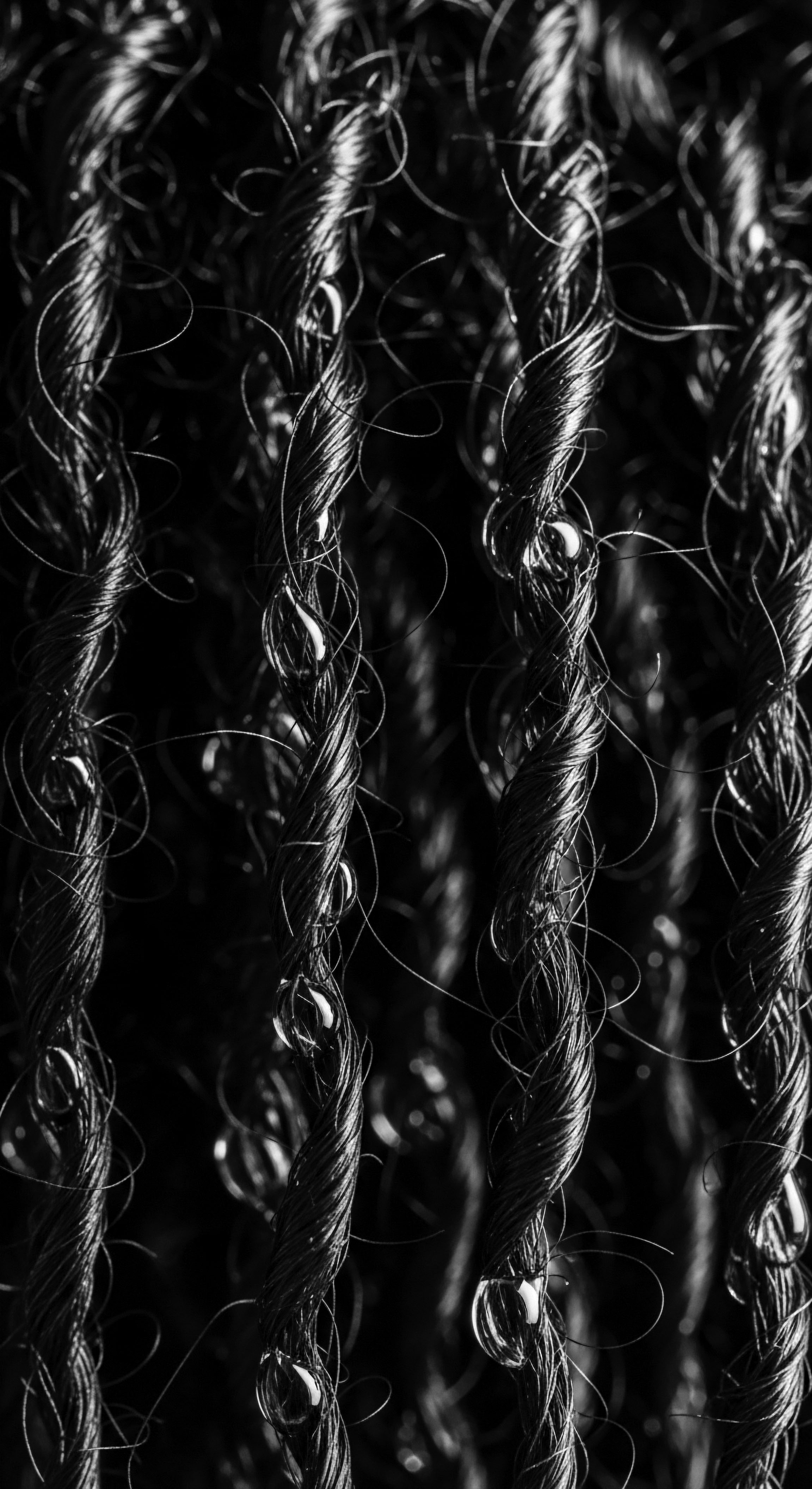
A Delineation of Form and Function
The follicular unit, the fundamental anatomical entity, includes not only the hair follicle itself but also its associated sebaceous gland, arrector pili muscle, and neural and vascular networks. These components function in concert to support hair growth and provide sensory input. The sebaceous glands, for example, secrete sebum, a natural oil that lubricates the hair shaft.
In textured hair, the spiral path of the hair shaft can impede the even distribution of sebum, rendering the hair more susceptible to dryness and mechanical damage. This physiological predisposition necessitates external moisturizing, a practice deeply embedded in traditional textured hair care.
Furthermore, the hair follicle houses multiple populations of stem cells, particularly in the bulge region, which are critical for initiating new hair cycles and repairing follicular damage. The resilience of textured hair, despite centuries of challenging styling practices and environmental exposures, can be attributed in part to the robust regenerative capacity of these follicular stem cells. Understanding the molecular signals that govern these stem cells offers avenues for future hair health interventions that honor and support the inherent biology of textured hair.
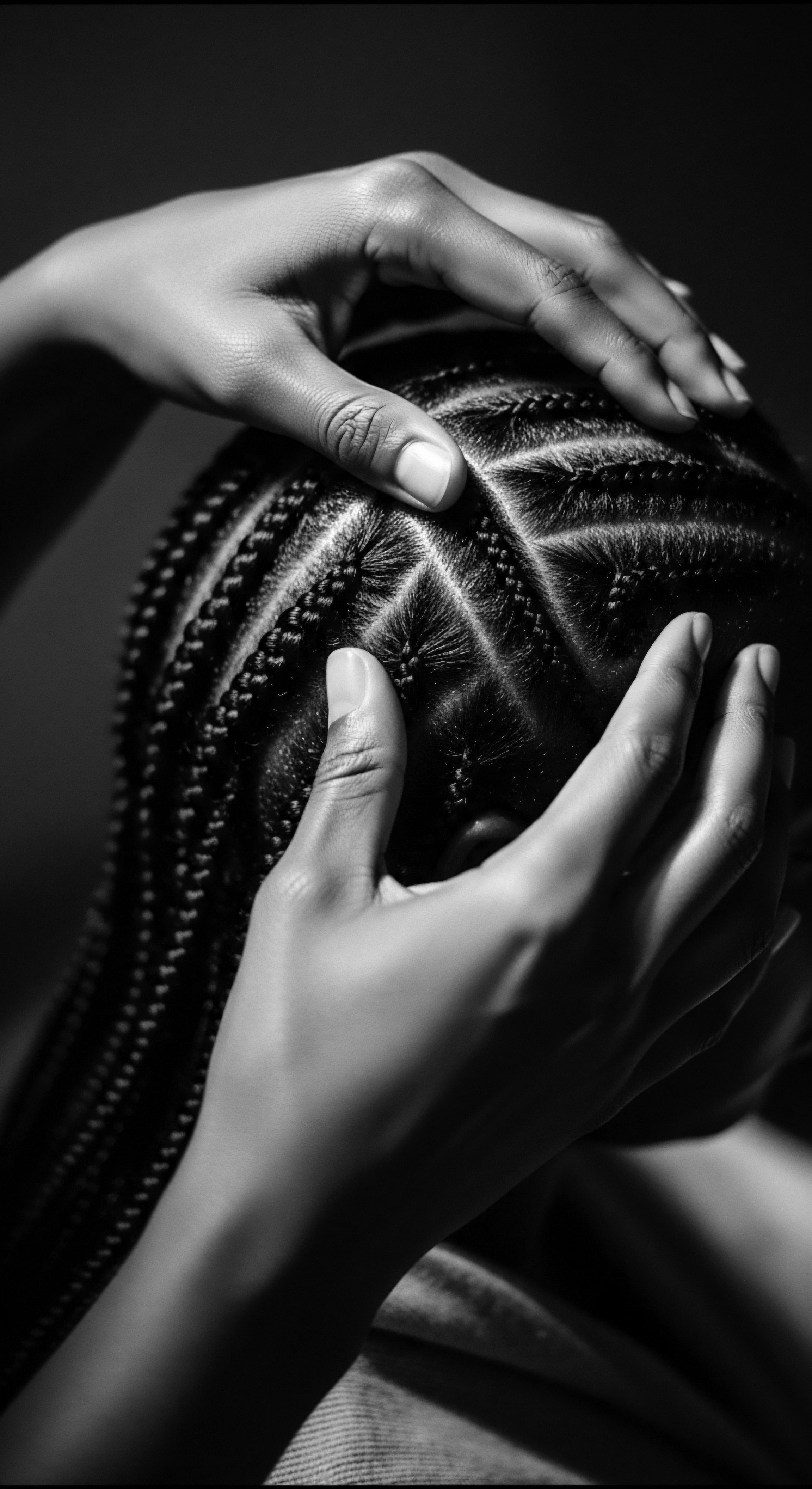
Genetic Legacies and Environmental Dialogues
The curl of textured hair is genetically determined, with studies identifying specific genes, such as TCHH (trichohyalin), that play a part in shaping the hair shaft and influencing curl pattern. While genetic factors lay the foundation, environmental influences, hormonal shifts, and hair care routines also play a role in shaping hair characteristics throughout an individual’s life. The remarkable diversity within textured hair types, from loose waves to tightly coiled patterns, reflects the rich genetic heritage of African populations. This genetic variability is a testament to millennia of adaptation and human migration, resulting in a spectrum of hair forms that each possess their own unique structural properties.
The physiological distinctions of textured hair, while conferring its unique beauty, also present particular vulnerabilities when subjected to certain external stressors. One significant example is Traction Alopecia, a form of hair loss resulting from prolonged or repetitive tension on the hair follicle. This condition is disproportionately observed in women of African descent, with studies reporting prevalence rates as high as 31.7% in adult women in some African communities.
A study conducted in Yaoundé, Cameroon, involving 223 women, found a prevalence of traction alopecia at 34.5%, with younger women being most affected. This widespread occurrence is not a reflection of inherent follicular weakness, but rather a direct consequence of styling practices, such as tight braids, weaves, and extensions, often employed to achieve desired aesthetics or to conform to societal beauty standards that historically favored straighter hair.
The historical adoption of certain styling practices, driven by societal pressures, has revealed the hair follicle’s vulnerability to chronic tension, leading to conditions like traction alopecia.
The continuous pulling exerted by these styles can lead to inflammation around the hair follicle, disruption of the dermal papilla’s blood supply, and eventually, scarring of the follicle, resulting in permanent hair loss. This historical example underscores the complex interplay between physiological resilience, cultural practices, and external societal pressures. The hair follicle, while robust, has its limits, and repeated trauma can alter its capacity for regeneration.
Another area of concern is the historical and ongoing use of chemical relaxers. These products, designed to permanently straighten highly coiled hair, function by breaking down the disulfide bonds within the hair shaft, fundamentally altering its protein structure. While they achieve a desired aesthetic, their harsh chemical nature can cause significant damage to the hair shaft and, crucially, to the scalp and hair follicle itself.
Repeated application can lead to scalp burns, inflammation, and follicular damage, potentially contributing to conditions such as Central Centrifugal Cicatricial Alopecia (CCCA), a scarring alopecia that disproportionately affects Black women. The physiological insult to the follicle from such chemical treatments highlights the importance of understanding the integrity of the follicular unit when considering hair care practices.
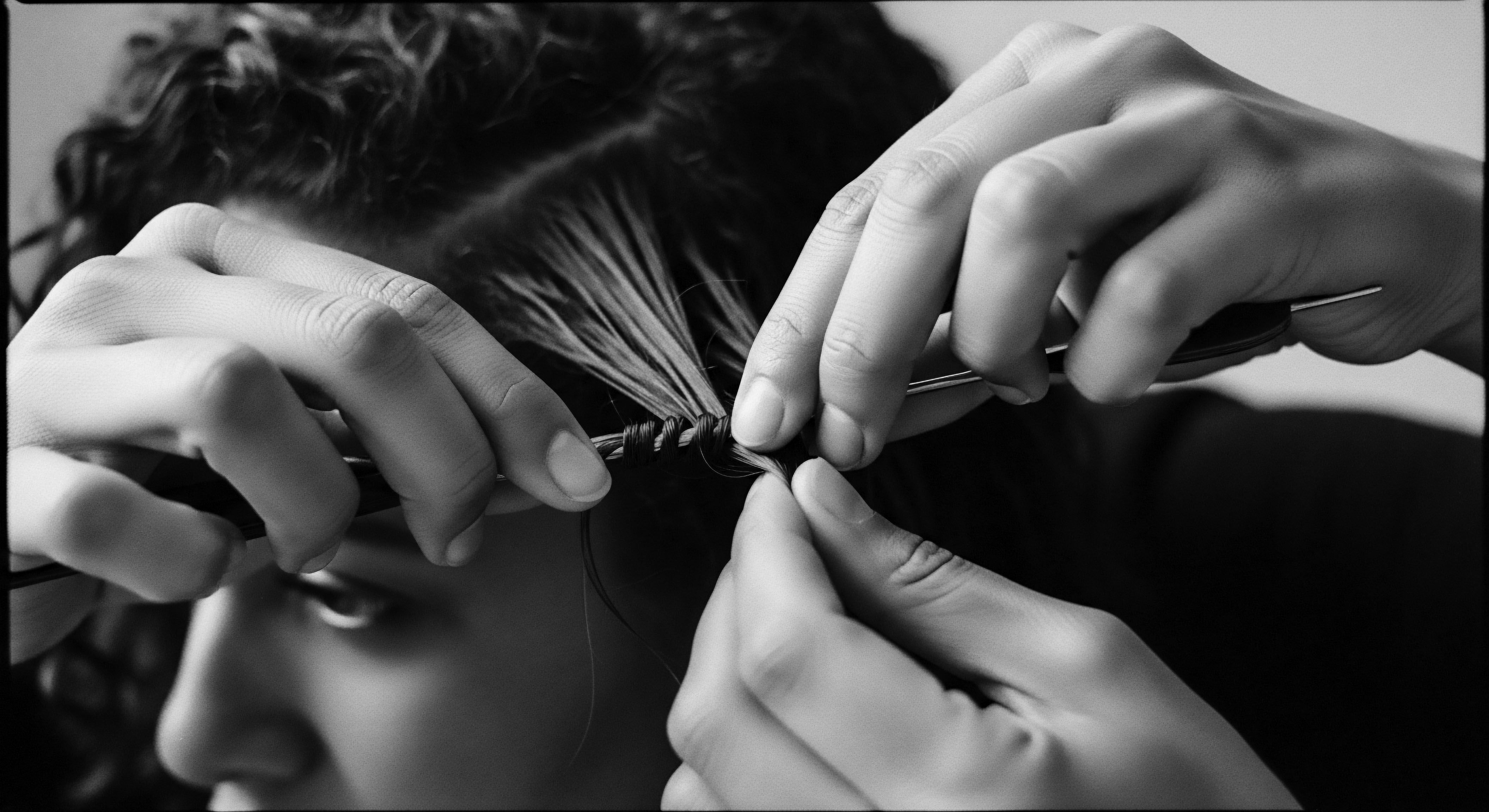
The Epigenetic Whispers of Heritage
Beyond direct genetic inheritance, the field of epigenetics offers a lens through which to consider how environmental and social factors might influence gene expression related to hair follicle health across generations. While still an emerging area of research for hair, it suggests that the cumulative stress, nutritional deficiencies, or chronic inflammation experienced by ancestral communities due to challenging living conditions or styling practices could, in theory, leave subtle marks on the epigenome, potentially influencing follicular responses in subsequent generations. This perspective invites a deeper, more empathetic examination of hair conditions prevalent in diasporic communities, recognizing them not merely as individual pathologies but as potential echoes of historical experiences. The very act of resilience, of adapting hair care practices to survive and thrive amidst adversity, may also carry subtle epigenetic imprints.
Consider the collective experience of navigating beauty standards that historically devalued textured hair. This societal pressure often led to the adoption of styling methods that, while offering social acceptance, placed immense physiological strain on the hair follicle. The psychological stress associated with hair discrimination and the constant negotiation of identity can also have physiological repercussions, including impacts on hair growth cycles through stress-induced hormonal changes. The follicle, therefore, becomes a site where biology, history, and identity converge, reflecting the complex experiences of a people.
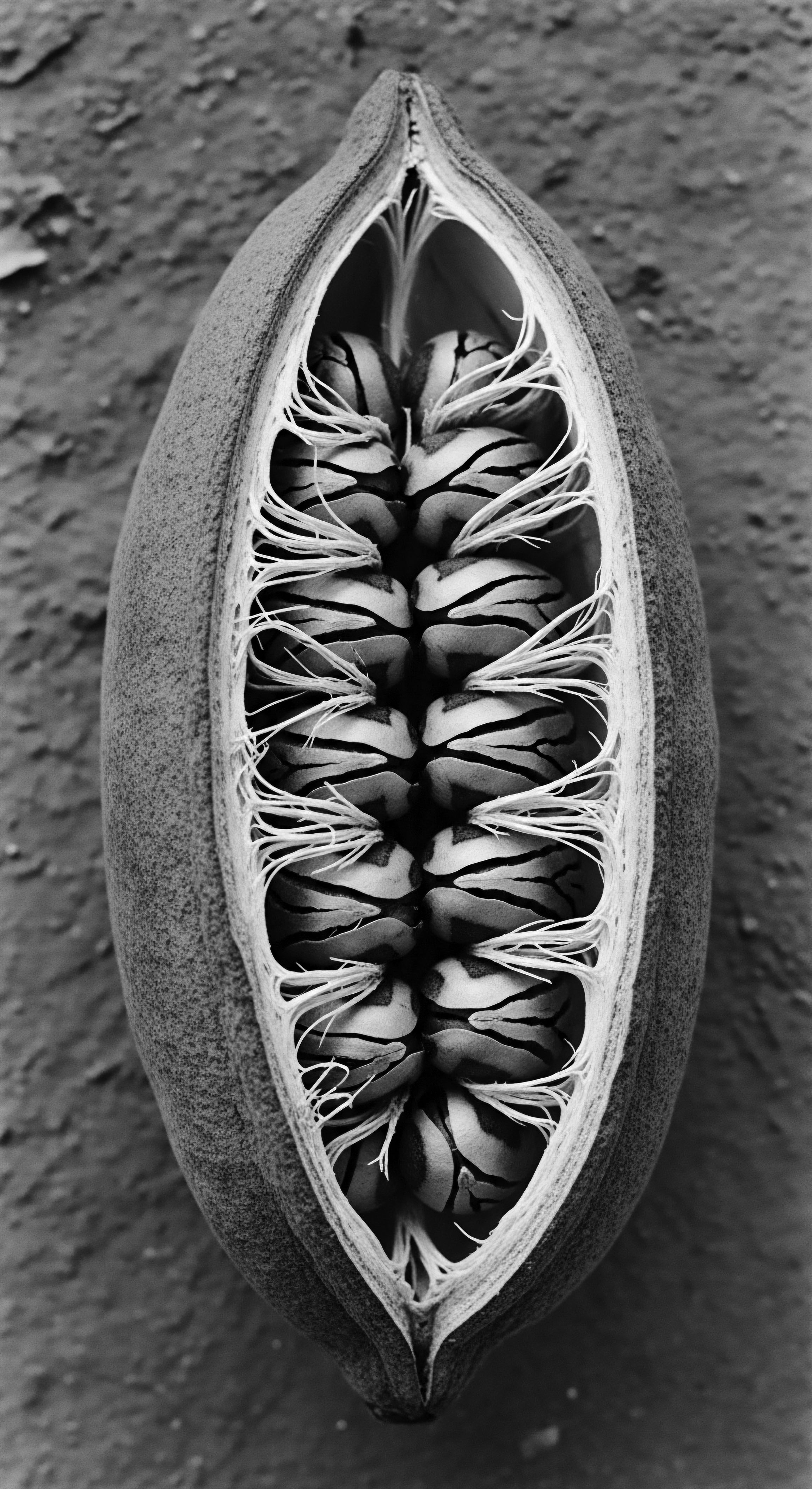
Sociocultural Cartographies of the Strand
The academic examination of Hair Follicle Physiology for textured hair cannot be separated from its sociocultural context. Hair, particularly for Black and mixed-race individuals, has long served as a powerful symbol of identity, resistance, and cultural pride. The practices surrounding its care, often centered around the follicle’s health and vitality, were not merely cosmetic but deeply embedded in communal rituals, family bonds, and expressions of self.
The ancestral knowledge of cultivating plants for hair health, for instance, represents an early form of pharmacological understanding applied to the hair follicle. Ethnobotanical studies document the widespread use of various plants for hair care across African regions, addressing concerns like hair loss, dandruff, and overall hair conditioning. These traditional remedies, while lacking modern scientific validation in many cases, often relied on properties that would logically support follicular health, such as anti-inflammatory, antimicrobial, or moisturizing compounds.
The continuous re-evaluation of these traditional practices through a scientific lens offers a compelling narrative of validation. Modern research into the biochemical properties of shea butter or specific plant extracts can often explain the empirical benefits observed by generations of practitioners. This convergence of ancient wisdom and contemporary science enriches our comprehension of hair follicle physiology, transforming it from a purely biological concept into a testament to human ingenuity and enduring cultural heritage.
The meaning of hair follicle physiology, therefore, extends beyond the cellular and molecular; it encompasses the societal forces that shape hair practices, the historical burdens carried by certain hair types, and the profound cultural significance attributed to every strand. It is a field of study that invites an interdisciplinary approach, drawing from dermatology, genetics, anthropology, and cultural studies to offer a truly comprehensive and culturally attuned understanding.
- Anagen Phase ❉ The active growth period of the hair follicle, which determines the maximum length a hair can achieve.
- Catagen Phase ❉ A brief transitional period where the hair follicle shrinks and detaches from the dermal papilla.
- Telogen Phase ❉ The resting phase, during which the hair is inactive and eventually sheds, making way for new growth.
- Hair Follicle Stem Cells ❉ Specialized cells located in the follicle bulge that are essential for hair regeneration and repair.
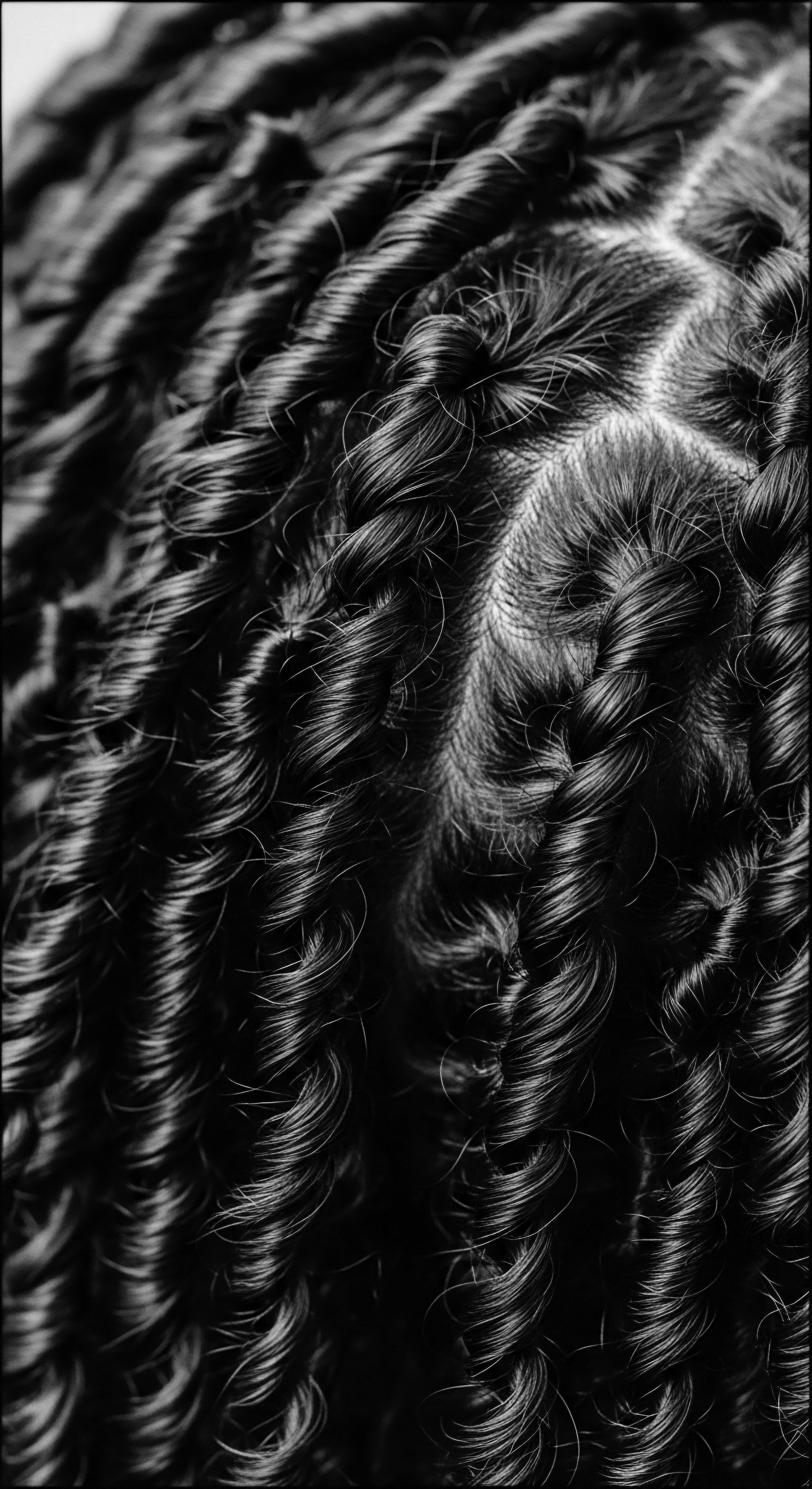
Reflection on the Heritage of Hair Follicle Physiology
To consider the Hair Follicle Physiology through the lens of Roothea’s ‘Soul of a Strand’ ethos is to embark upon a contemplative observance of a living legacy. Each coiled strand, each resilient curl, carries within its very structure the echoes of ancestral resilience, the wisdom of generations who understood the earth’s bounty for nourishment, and the enduring spirit of identity. This is not merely about cells and cycles; it is about the quiet dignity of hair that has witnessed migrations, endured transformations, and consistently served as a canvas for cultural expression.
The physiological distinctions of textured hair, so often misunderstood or even pathologized in historical contexts, are now increasingly appreciated as manifestations of rich genetic diversity. The unique elliptical shape of the follicle, the slower sebum distribution, and the inherent fragility at points of curvature are not deficiencies but characteristics that called forth specific, ingenious care practices from our forebears. These practices, born of necessity and passed down through communal touch and shared knowledge, represent a profound, intuitive understanding of the hair follicle’s needs long before microscopes revealed its hidden wonders.
As we deepen our comprehension of the Hair Follicle Physiology, we simultaneously honor the tender thread that connects us to those who came before. The knowledge of natural oils, the artistry of protective styles, and the communal rituals of hair care were not just superficial acts; they were acts of preservation, acts of cultural affirmation, and acts of love directed at the very source of our strands. This understanding compels us to move beyond simplistic notions of beauty and embrace a holistic appreciation for hair, recognizing its deep roots in our biological heritage and its enduring power as a symbol of who we are, where we come from, and where we are going. The hair follicle, in its silent, persistent cycle, whispers stories of survival, adaptation, and the unbroken spirit of textured hair, inviting us to carry its legacy forward with reverence and informed care.
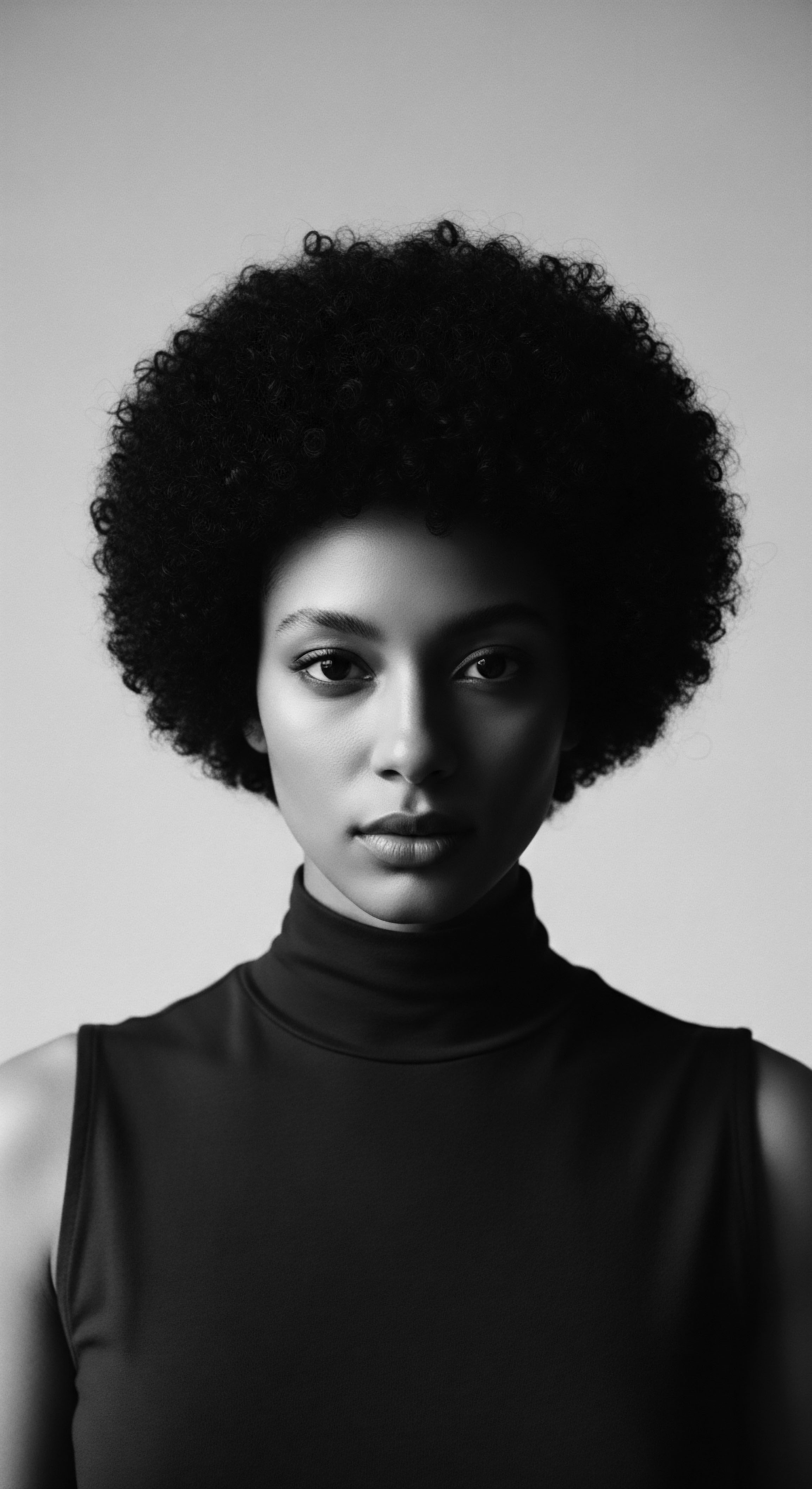
References
- Billero, V. & Miteva, M. (2018). Traction alopecia ❉ the root of the problem. Clinical, Cosmetic and Investigational Dermatology, 11, 149–159.
- Byrd, A. D. & Tharps, L. L. (2014). Hair Story ❉ Untangling the Roots of Black Hair in America. St. Martin’s Griffin.
- Gathers, R. (2013). Hair care practices and their association with scalp and hair disorders in African American girls. The Journal of Clinical and Aesthetic Dermatology, 6(1), 26-29.
- Gathers, R. & Mahan, M. G. (2014). African American women, hair care, and health barriers. Journal of Clinical and Aesthetic Dermatology, 7(2), 26-29.
- Khumalo, N. P. Ngwanya, R. M. & Jessop, S. (2007). Traction alopecia ❉ 2% topical minoxidil shows promise. Report of two cases. Journal of the European Academy of Dermatology and Venereology, 21(3), 433-434.
- Khumalo, N. P. Jessop, S. Gumedze, F. & Ehrlich, R. (2007). Hairdressing and the prevalence of scalp disease in African adults. British Journal of Dermatology, 157(5), 981-988.
- Mouchane, M. Taybi, H. Gouitaa, N. & Assem, N. (2024). Ethnobotanical Survey of Medicinal Plants used in the Treatment and Care of Hair in Karia ba Mohamed (Northern Morocco). Diversity, 16(2), 96.
- Olsen, E. A. Callender, V. McMichael, A. Sperling, L. Anstrom, K. J. Shapiro, J. & The North American Hair Research Society (NAHRS) Central Centrifugal Cicatricial Alopecia Study Group. (2011). Central hair loss in African American women ❉ Incidence and potential risk factors. Journal of the American Academy of Dermatology, 64(2), 245-252.
- Rodrigues, L. A. & de Paula, R. C. (2020). Black women’s hair ❉ the main scalp dermatoses and aesthetic practices in women of African ethnicity. Anais Brasileiros de Dermatologia, 95(3), 329-338.
- Tolliver, S. Wong, N. Williams, K. & Potts, G. (2025). Historical Perspectives on Hair Care and Common Styling Practices in Black Women. Cutis, 115(3), 95-99.
